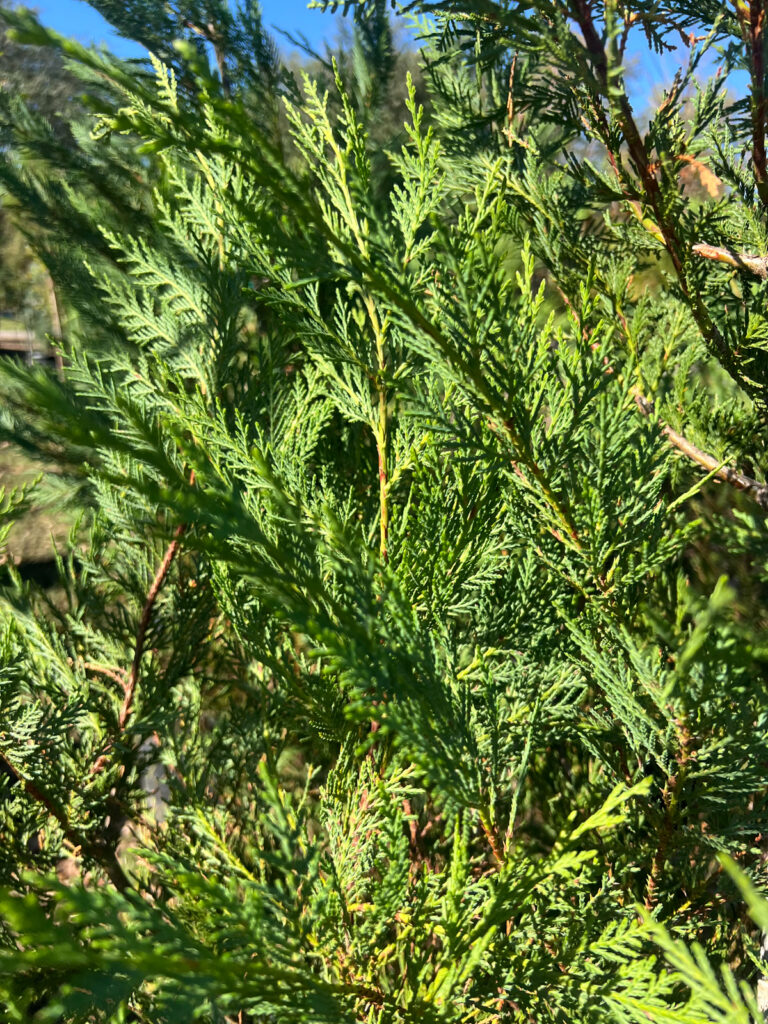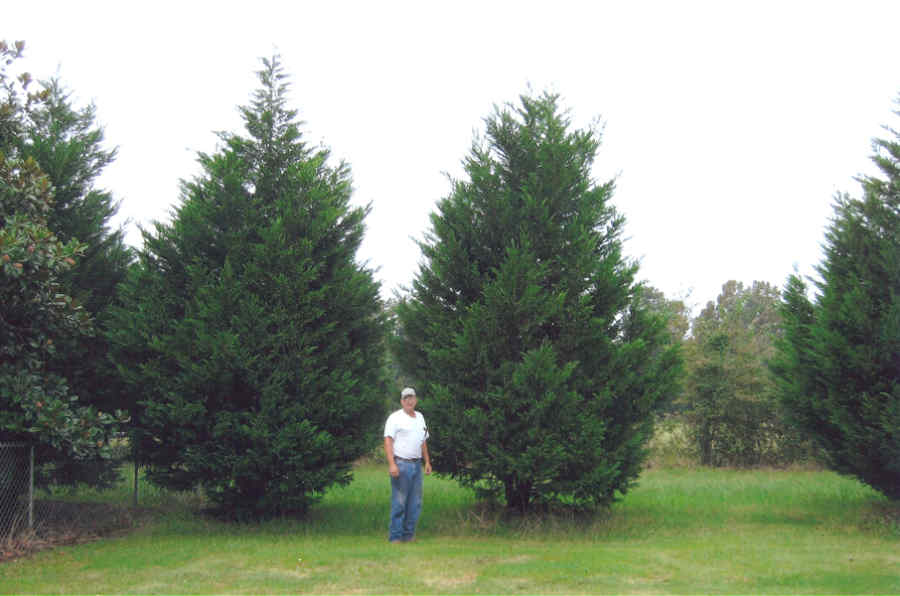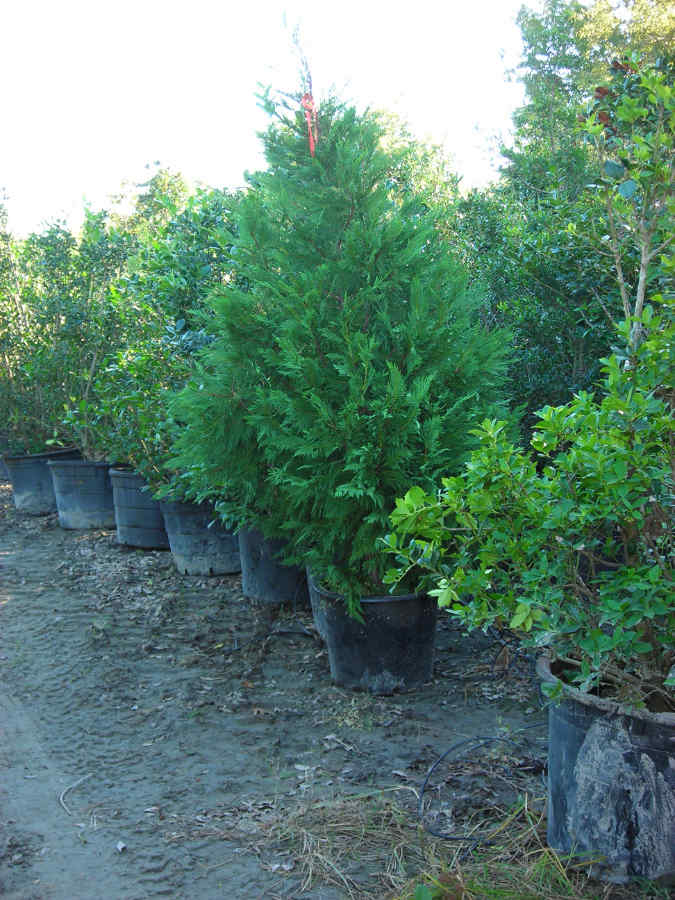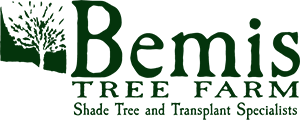





Cupressus leylandii
Description: The Leyland cypress (× Cupressocyparis leylandii) is widely recognized for its rapid growth and narrow form. When left unpruned, it typically grows in an oval or pyramidal shape. Known for its fast growth rate, it quickly establishes itself in landscapes, reaching a mature height of 60 to 70 feet. Its mature spread ranges from 15 to 25 feet, giving it a tall yet relatively slender profile, which makes it suitable for a variety of landscaping applications.
Twig/Bark: Leyland cypress twigs are slender, brown, and flexible and are resistant to breakage. The bark is red-gray with ridges. When young, the bark is scaly, but later develops gray weathered strips. The tree has many concentric branches that reach upwards into the air, forming a conical or columnar shape. The branchlets of a Leyland cypress are flattened or quadrangular and have a spiral twist.
Leaves: The foliage consists of dark green to bluish-green, scale-like needles that are flattened on evergreen sprays. The needle tips are pointy but notably soft, contributing to the tree’s overall aesthetic appeal.
Flower/Fruit: The Leyland cypress produces small, globular cones that measure between ½ and ¾ inch in diameter. These cones are composed of eight scales and add a decorative element to the tree, although they are not the primary focus of its ornamental value.
Habitat: This tree thrives in a wide variety of soil and climate conditions, serving as an excellent windbreak due to its dense foliage. The Leyland cypress prefers full sun to grow and develop to its fullest potential. Additionally, it is highly adaptable to various soil conditions, including acidic, alkaline, clay, drought-prone, loamy, moist, rich, sandy, and well-drained soils, making it suitable for diverse landscaping environments.
